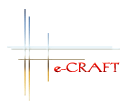Solution in SaaS Model
What Is Software as a Service (SaaS) and What Are Its Advantages?
The Software as a Service (SaaS) model implies the use of various applications in rent. Its so-called Cloud Computing. The essence of the model is that the customer does not buy the software, but pays for the service which it provides. The customer does not install software on the servers, but uses capacities of the developer, needing only to pay for the service, cloud server maintenance and consultation services. As a result the with SaaS customer gets access to the necessary application on a cloud server of the developer which allows saving money and quickly introducing the software to the business. It is needless to say that as a result everyone wins: customers don’t need to spend money on system administration, and suppliers, thanks to software installation on their cloud hosting, quickly provide the clients with the necessary service.

Advantages of Software as a Service (SaaS) Model
Currently SaaS is considered to be an alternative to the standard scheme of software installation on the customer’s equipment (standard delivery model). These two models do have a lot of differences.
In the case with SaaS the client pays not for possession of the program, but for its rent. The client makes a small periodic user’s payment and is relieved of necessity to invest the essential sums purchasing the software. You don’t have to buy the software, and the hardware platform for installing it. Don’t forget that after the groupware system is implemented in a company, it needs constant further maintenance. If all these responsibilities are passed on to SaaS Providers (cloud computing providers), the customer will only need to use the functions of the cloud app making regular payments for access to the collaboration system and accompanying services.
Secondly: in SaaS model the customer receives not the software, but only that functions which it provides (as a web service). And this is implementation of business functions that a customer needs.
Thirdly: in SaaS introduction procedure is reduced to a minimum and is very simple – the customer simply needs to receive a login/password for the cloud application and to enter it. SaaS collaboration systems do not require long adjustment, or especially difficult adaptation to requirements of the customer and expensive consulting services. As a result time of project performance reduces as well as all the expenses.
Fourthly, the SaaS model provides universal access to the necessary application from any place where there is Internet. The majority of cloud computing companies (SaaS providers) undertake to grant almost constant access to the service.
Fifthly, the SaaS-model allows small and medium business companies (SMB companies) to use applications which were inaccessible earlier because of high costs. Instead of purchasing the program the customer for a small payment rents business functions which it is capable of. Does one really need more?
Besides that SaaS model provides automatic updating of software without any additional expenses for the customer and the possibility to change the volume of the functional at any time. If there is no necessity for certain functions of the collaboration system, it is always possible to cancel them and to pay only for the ones that are essential for work.
